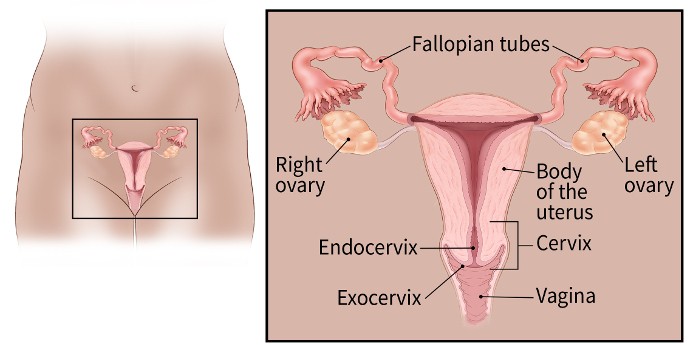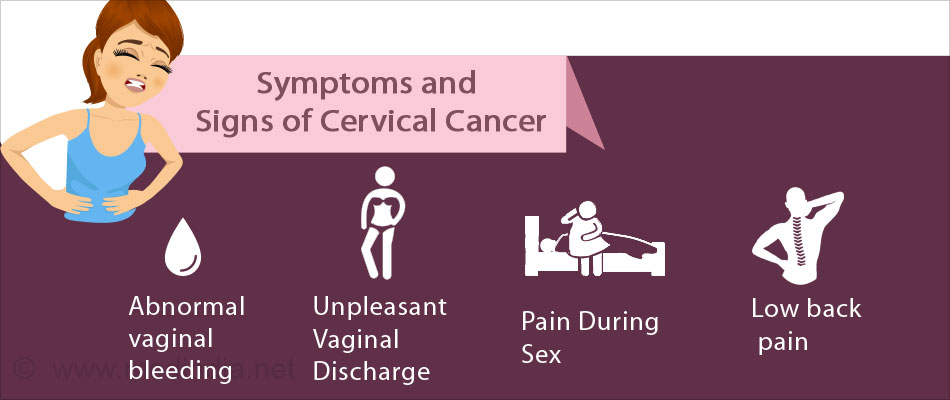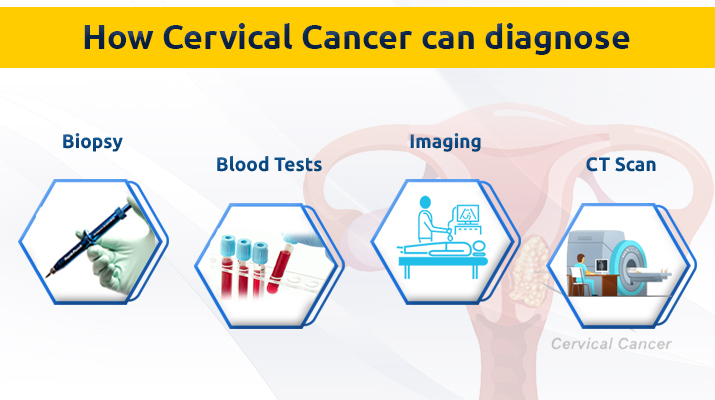Prolife Cancer Centre – Cervix Cancer Treatment in Pune
What is Cervix Cancer?
Cervical cancer is a type of cancer that occurs in the cells of the cervix — the lower part of the uterus that connects to the vagina. This is sometimes called the uterine cervix.
The fetus grows in the body of the uterus (the upper part). The cervix connects the body of the uterus to the vagina (birth canal). Prolife Cancer Centre provides the best Cervix Cancer Treatment in Pune.
The cervix has two different parts and is covered with two different types of cells.
- The part of the cervix closest to the body of the uterus is called the Endocervix and is covered with glandular cells.
- The part next to the vagina is the Exocervix (or ectocervix) and is covered in squamous cells.
These two cell types meet at a place called the transformation zone. The exact location of the transformation zone changes as you get older and if you give birth.

Most cervical cancers begin in the cells in the transformation zone. These cells do not suddenly change into cancer. Instead, the normal cells of the cervix first gradually develop pre-cancerous changes that turn into cancer.
Types of cervical cancer
Cervical cancer is classified based on the type of cell where it develops. The most common types of cervical cancer are:
- Squamous cell carcinoma (cancer):This is the most common type of cervical cancer and is found in 80% to 90% of cases. It develops in the lining of the cervix.
- Adenocarcinoma: This type of cervical cancer develops in gland cells that produce cervical mucus. About 10% to 20% of cervical cancers are adenocarcinomas.
- Mixed carcinoma (cancer):Occasionally, cervical cancer has features of squamous cell carcinoma and adenocarcinoma.

Book Appointment
Quick Contact
- Address 557A1/15C Gultekadi, Market Yard Pune, Maharashtra 411037
- Email social.prolife@gmail.com
- Phone +91-9607079019, +91-9607079029
symptoms of Cervical cancer's
What are Cervical cancer’s symptoms?
In its earliest stages, cervical cancer usually does not have symptoms. This is why regular Pap tests are so important, particularly for women who are sexually active.
When cervical cancer does have symptoms, they may vary. Some symptoms of cervical cancer include:
- Vaginal discharge tinged with blood
- Vaginal bleeding after sexual intercourse
- Abnormal vaginal bleeding: after menopause, between menstrual periods or excessively heavy periods
- Urinating more often
- Pain during sex
- Swollen leg
These symptoms are not always signs of cervical cancer. However, it is important to discuss any symptoms with a doctor, since they may signal other health problems. If you see any cervical cancer symptoms then meet Dr. Sumit Shah, Provides the best Cervix Cancer Treatment in Pune.

Cervical cancer risk factors
Anything that increases a woman’s chances of getting HPV or decreases her ability to get Pap smears is a risk factor for cervical cancer.
Human Papillomavirus (HPV) is spread by sexual contact and is the cause of almost all cases of cervical cancer, as well as many vaginal and vulvar cancers. HPV may cause the cells in the cervix to change. If abnormal cells are not found and treated, they may become cancer.
Cervical cancer risk factors include:
Age: The risk of cervical cancer increases with age. It is found most often in women over the age of 40. However, younger women often have precancerous lesions that require treatment to prevent cancer.
Smoking: Cigarette smoke contains chemicals that damage the body’s cells. It increases the risk of precancerous changes in the cervix, especially in women with HPV.
Sexual behavior: Certain types of sexual activity may increase the risk of getting an HPV infection. These include:
- Multiple sexual partners
- High-risk male partners
- First intercourse at an early age and
- Not using condoms during sex.

Cervical Cancer Diagnostic Tests

If you have symptoms or Pap test results that suggest precancerous cells or cervical cancer, your doctor will examine you and ask you questions about your health; your lifestyle, including smoking and drinking habits; and your family medical history. For the best diagnosis & treatment visit prolife cancer centre, where our specialist provides the best cervical cancer treatment in Pune.
One or more of the following tests may be used to find out if you have cervical cancer and if it has spread. These tests also may be used to find out if treatment is working.
Colposcopy: This test uses an instrument called a colposcope to look more closely at an area of abnormal tissue on the cervix, vagina or vulva. A colposcope is a microscope designed to examine the cervix. It looks like a pair of binoculars on a stand.
Biopsy: In a biopsy to look for cervical cancer, the doctor removes a small amount of tissue from the cervix to observe under a microscope.
Types of cervical biopsies include:
Punch biopsy: The tissue sample is removed from the cervix using biopsy forceps, an instrument used to grasp tissue firmly and remove it.
Endocervical curettage (ECC): A tissue sample is scraped from an area just past the opening of the cervix using a curette (small, spoon-shaped instrument) or a thin, soft brush.
LEEP (Loop electrosurgical excision procedure): This test uses a small wire that is heated with low-voltage, high-frequency radio waves to remove cells from the cervix so a pathologist may look at them under a microscope and make a diagnosis.
Cone biopsy: A cone-shaped sample of tissue is removed so the pathologist can see if abnormal cells are in the tissue beneath the surface of the cervix.
Imaging tests, which may include:
- CT or CAT (computed axial tomography) scans
- MRI (magnetic resonance imaging) scans
- PET (positron emission tomography) scans
- Chest X-ray
- Ultrasound
- Laparoscopic retroperitoneal lymph node dissection: In this minimally invasive surgical procedure, lymph nodes are removed to help find if cancer has spread.
Opinion at Prolife Cancer Centre
Getting a Second Opinion at Prolife Cancer Centre
The pathologists at Prolife Cancer Centre are highly specialized in diagnosing and staging cervical cancers, and we welcome the opportunity to provide second opinions. If you are looking best Cervix Cancer Treatment in Pune then visit prolife cancer centre, which is the best cancer hospital in Pune.
Cervical Cancer Staging
If you are diagnosed with cervical cancer, your doctor will determine the stage (or extent) of the disease. Staging is a way of classifying cancer by how much disease is in the body and where it has spread when it is diagnosed. This helps your doctor plan the best way to treat cancer.
Cervical Cancer Stages
Stage 0: Abnormal cells are found in the inner lining of the cervix. This Stage also is called carcinoma in situ.
Stage 1: Cancer has formed and is in the cervix only.
- Stage 1A: A small amount of cancer that can only be seen with a microscope is in the tissues of the cervix.
- Stage 1B: Cancer has formed, measuring more than 5 millimeters deep and is limited to the cervix only.
Stage 2: Cancer spreads beyond the cervix and uterus, but has not spread to the lower third of the vagina or to the pelvic wall (the tissues that line the part of the body between the hips).
- Stage 2A: Cancer is limited to the upper two-thirds of the vagina but not to the parametrium (the tissue that surrounds the uterus).
- Stage 2B: Cancer has spread to the parametrium (tissues around the uterus) but not up the pelvic wall (the tissues that line the part of the body between the hips).
Stage 3: Cancer has spread to the lower third of the vagina and/or extends to the pelvic wall.
- Stage 3A: Cancer has spread to the lower third of the vagina with no extension to the pelvic wall.
- Stage 3B: Cancer has spread to the pelvic wall and/or caused hydronephrosis (swelling of a kidney due to buildup of urine) or a non-functioning kidney.
- Stage 3C: Cancer has spread to the pelvic and/or para-aortic lymph nodes (the lymph nodes between the rib cage and pelvis, near the largest blood vessel in the body), regardless of the size of the tumor.
Stage 4: Cancer has spread beyond the pelvis and has involved the lining of the bladder or rectum (as shown in a biopsy).
- Stage 4A: Cancer has spread to nearby organs in the pelvis.
- Stage 4B: Cancer has spread to distant organs (such as the abdomen, liver, intestinal tract or lungs).
Our Cervical Cancer Treatments

At Prolife Cancer Center, your Cervical cancer treatment is personalized to give the best results, while concentrating on your quality of life. We offer the best Cervix Cancer Treatment in Pune.
If you are diagnosed with cervical cancer, your doctor will discuss the best options to treat it. This depends on several factors, including:
- Stage of the cancer
- Whether cancer has spread to other parts of the body
- Size of the tumor
- Your desire to have children in the future
- Your age and overall health
Surgery for cervical cancer
- Small Precancerous Lesions
These types of surgery may be used for precancerous lesions or cervical cancer that has not spread beyond the cervix:
Cryosurgery (cryotherapy): An instrument freezes and destroys precancerous tissue.
LEEP (loop electrosurgical excision procedure): Electrical current is passed through a thin wire hook to remove precancerous lesions.
Cone: This procedure is the same as a cone biopsy that removes all the cancerous tissue.
Hysterectomy: This operation removes the uterus and the cervix, but not the tissue next to the uterus.
Large Cervical Cancer Lesions
If cancer has spread, doctors usually will recommend chemotherapy and radiation therapy.
Trachelectomy: The cervix and surrounding tissue are surgically removed but not the uterus.
Radical hysterectomy: The cervix, uterus, part of the vagina, the tissues surrounding the cervix (parametria) and nearby lymph nodes are removed, either through the vagina or a cut on the abdomen.
Radiation therapy for cervical cancer
Radiation therapy usually is used to treat cervical cancers that have spread beyond the cervix or very large lesions (larger than 4 centimeters. This therapy may be used instead of surgery. Sometimes it is necessary after surgery to treat cancer that has spread or to reduce the risk that cancer will come back.
Chemotherapy for cervical cancer
Prolife Cancer Centre offers the most up-to-date and advanced chemotherapy options for cervical cancer. We also work with you to provide supportive care for the side effects of treatment, including nausea and constipation.
Prognosis & Follow-up

Prognosis & Follow-up
Our survivorship clinics will help you develop a follow-up care plan to make sure you’re getting the most out of life after cancer. Each clinic has specialists that focus on a specific cancer type, providing care based on guidelines designed for survivors just like you.
Your survivorship treatment plan will include:
- Regular physical exams with an overview of your recent medical history
- Monitoring for early detection of new or returning cancers
- Management of cancer and treatment-related side effects
- Lifestyle coaching and tips to help reduce cancer risk
- Referrals to community resources and support groups
It is still important to see your primary care doctor and to let them know about your follow-up care plan. For regular (non-cancer) check-ups, we will communicate with your primary doctor, but it is up to you to follow up regularly with them.

